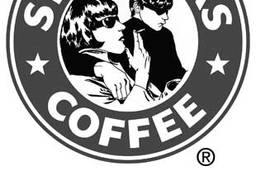Modern-day American border guard Shawn Carter works for the Chicago Transit Authority. His first morning of work at the Western Brown Line El station, a few days before the November 9 anniversary of the so-called Western defeat of Communism, he was shocked to find a massive intact section of the Berlin Wall five yards from his post.
“I’d never seen it before!” he said, excited. The descriptive literature closest to his seat detailed shootings and escape attempts and Ronald Reagan’s demands that Gorbachev eliminate the barrier to capitalism - exciting moments in the history of what, otherwise, was a slab of concrete people lived with for 28 years. The moment he got to work, Carter said, he pored over it. “It’s amazing to see what people went through, that people lost their lives.”
His sympathy didn’t extend, however, to the would-be modern barrier jumper whose CTA card didn’t work. Carter flashed him a look and the dejected man wandered away. This is what CTA attendants get paid to do.
Carter theorized the Wall section was probably placed there in the Lincoln Square neighborhood because Germans historically settled in the area. Far more than a concession to local and international history, however, Carter thought the Wall was a great educational opportunity.
“They don’t teach young people in school anymore,” he lamented. “The TV teaches them now.”
But what is to be learned from the Berlin Wall?
Usually commemorated as the end of the cold war, although sometimes more thoughtfully considered the victory of democracy over Communism, in all senses the opening of the border that kept East from West in the late 1980s was a major score for capitalism.
The Wall was a strain on families separated by its almost overnight construction - few Easterners speak of a thwarted desire for American goods. Yet, when the Wall fell on this date 20 years ago - following, depending on who you ask, the success of David Hasselhoff’s hit single “I’ve Been Looking for Freedom” in Germany or Reagan’s equally catchy “Mr. Gorbachev, tear down this wall!” speech - some of the very first legal border crossers weren’t imaged in the massive swarms pictured on the evening news.
No, former resident Sarah Lewison, an artist, remembered, “The loosening of restrictions between west and east was scheduled to favor the entry of commodities. First Coca Cola, then visits to auntie.”
Lewison was leaving Berlin just as the Wall was crumbling, and remembered talking to artists who lived in the East. Besides restricted access to their families, they had few complaints. “They all had jobs doing what they loved,” she said. (Berlin’s unemployment rate is now around 14 percent.)
Still, the fall of the Wall has come to symbolize the justice inherent in free-market economies, and nowhere is this more apparent than in the tourist shops along Unter den Linden in Berlin. These sell trinkets and gewgaws to any comer, each festooned with a brightly colored bit of felled capitalist resistance.
Necklaces, bears, postcards, snow globes and diminutive Brandenburg Gates are available adorned with crumbling chunks of the Wall. (Prices start at around 10 euros and quickly become more expensive, depending on how well you want to remember the GDR.) If you can’t decide on what occasion you may wear a memoir of the barrier that at least 138 people lost their lives trying to pass, you can purchase a stand-alone, inch-diameter, certificate-authenticated “piece of German history” for around 2.95 euros - about $4.25 USD.
While the pickaxes and memento collecting started immediately, the Wall’s first commercial appearance did not come until five days later. Selling reminders of the cold war to Americans was a craze kicked off by radio personality Steve Cochran of KDWB in Minnesota’s Twin Cities. On November 14, 1989, he offered two chunks to callers as prizes on his drive-time commercial radio show. This inspired immediate outrage over the crass sale of the Communist keepsakes that lasted until the Christmas shopping season swung into high gear two weeks later. By then, department stores in most US downtowns were selling bits of the Wall too.
By 1990, GDR souvenir sales were common enough in tourist shops in Berlin, and independent vendors roamed the streets with smaller displays.
Today, at any given moment, perhaps 5,000 euros worth of Wall memorabilia is on retail display today at each of 15 major tourist shops in Germany’s capital city, resulting in around $115,000 worth of Communist merch for sale every day, still two decades later. Already sold are the 45 several-ton sections of Wall situated throughout the world - 27 of which are now in the United States. Most were sold at unknown costs, likely in the tens or hundreds of millions, not including shipping or handling. Economically speaking, sales of the Wall may by now have exceeded the $7 billion cost in local talent the thing was originally built to restrain.
A glorious victory for capitalism, indeed. Especially since, just a few years ago, it looked for a moment as if the Communists could still win. Sales of the Wall, Die Zeit reported in 2007, had recently stagnated and most of the “good pieces” - the colorful ones - had been sold off already.
The problem was, the cheerful, creative resistance to Communism evidenced by graffiti wasn’t quite as common as all that. Much of it was painted, in fact, only after the fall, leaving a great deal of the Wall the dull gray of its original 1961 construction. Who wants to remember that?
The natural solution - under capitalism - was to recall the plain concrete pieces and spray paint them, reporter Tobias Timm explained. Sales picked up again, and these pieces continue to be sold with genuine certificates of authenticity. Because capitalism urges adherence to the letter of the law, but not to its spirit, this makes perfect sense. They are, after all, still authentic pieces of Wall.
Not so in Dixon, Illinois, about an hour and 45 minutes west of the Western Avenue Brown Line stop in Chicago. The boyhood home of Ronald Reagan, like the El station, boasts an intimate connection with this piece of history. In fact, several years ago, the city installed a replica of the Berlin Wall in its Wings of Peace and Freedom Park. In recognition of the former president’s “efforts to attain worldwide peace and freedom” (according to the Dixon Tourism Directory web site), several full sections of cement wall stand, brightly painted. Unfortunately, they are totally unmarked as fakes. News outlets, tourists and tea-party patriots regularly overlook their replica status and assume them to be real.
And under capitalism, this makes sense too. They are, after all, still authentic pieces of some wall.
Maybe the resounding lesson of the Berlin Wall for young people is: In the free market, history just doesn’t matter.
This seems to be the theme of “MTV’s” November 5 U2 concert at the Brandenburg Gate, part of a week-long series celebrating the fall of the Wall. To ensure that only properly ticketed fans would enjoy the free performance, “MTV” built up a new seven-foot wall around the concert area.
It was certainly in poor taste, but somehow seems an appropriate way to commemorate 20 years of capitalism.
This article was originally published at Truthout.org








